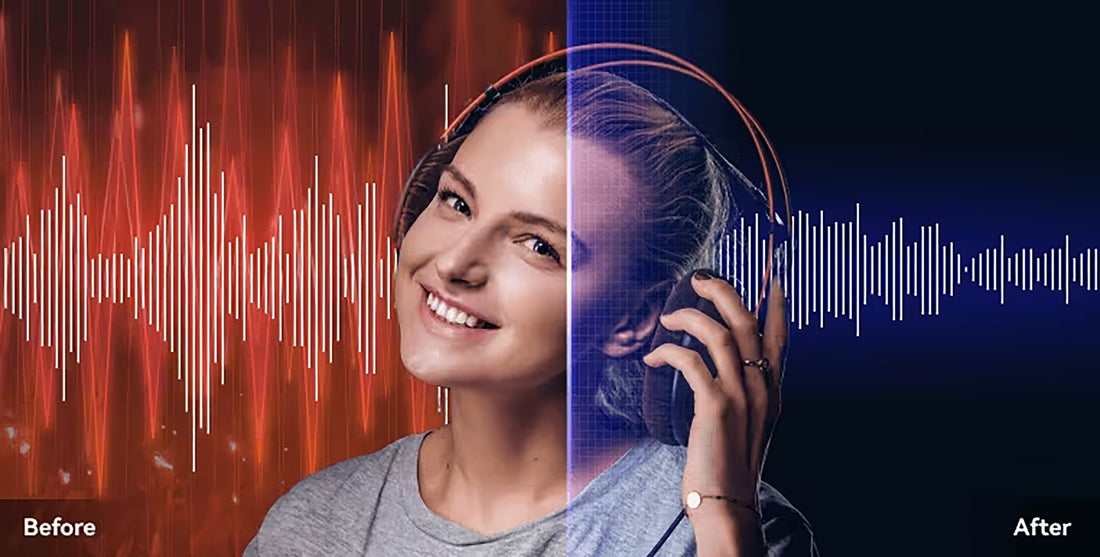Background noise is one of the most common and frustrating issues producers, content creators, and online sellers face when recording audio. Whether you’re filming product demos, creating voiceovers, or hosting a podcast, unwanted sounds like fan hums, keyboard clicks, or traffic outside can ruin the quality of your work—and your brand’s professionalism.
Fortunately, with the right tools and setup, you can dramatically reduce or eliminate background noise from your recordings. Below, we explore four essential equipment upgrades that will improve your sound quality and keep your audio clean.
Microphone (with Noise Isolation Capabilities)
Your microphone is the foundation of great audio. To minimize background noise, you’ll want a mic that isolates your voice while rejecting ambient sound.
Recommended Products:
Shure SM7B – A legendary dynamic mic known for its broadcast-quality sound and excellent noise rejection. Ideal for studios or untreated spaces.
Rode NT1-A – A super quiet condenser mic with low self-noise—perfect for clean vocals when paired with sound-treated rooms.
Blue Yeti (Cardioid Mode) – A versatile USB mic that, when set to cardioid mode, focuses directly on your voice while minimizing room noise.
Look for microphones with cardioid or supercardioid pickup patterns, which are designed to capture what’s directly in front of the mic and reject surrounding noise.
Good Audio Interface or Mixer
A quality audio interface acts as a clean bridge between your mic and your computer, giving you more control over gain levels and ensuring a low-noise signal path.
Recommended Products:
Focusrite Scarlett 2i2 (3rd Gen) – A compact and reliable interface with clean preamps and great build quality.
PreSonus AudioBox USB 96 – Budget-friendly with solid audio performance for creators just starting out.
Rode Rodecaster Pro II – An all-in-one mixer for podcasters and streamers with built-in noise filters and effects.
A good interface or mixer helps eliminate electrical hum, reduces distortion, and improves the clarity of your recordings.
Pop Filter or Windscreen
These simple but powerful tools prevent popping sounds from plosives (like "p" and "b") and reduce wind or breath noise close to the mic.
Recommended Products:
Aokeo Professional Pop Filter – Dual-layer mesh design that fits most standard mic stands.
Rode WS2 Windshield – Ideal for outdoor or mobile recordings with compatible Rode mics.
Blue The Pop Universal Filter – Stylish and functional, especially for Blue mics and USB setups.
Using a pop filter not only improves the listener’s experience but also prevents you from needing to edit out harsh sounds later.
Mic Boom Arm or Stand
A boom arm or solid stand allows you to position the mic precisely while reducing physical noise from your desk or environment.
Recommended Products:
Heil Sound PL-2T Boom Arm – A professional-grade boom that’s smooth and silent when adjusting.
Elgato Wave Mic Arm LP – A low-profile arm that keeps your desk clutter-free and your mic stable.
On-Stage MS7701B Tripod Stand – A classic, affordable mic stand that’s easy to use and reliable.
This accessory not only improves your mic positioning but also isolates it from vibrations caused by typing, movement, or desktop noise.
Final Thoughts
Eliminating background noise isn’t just about software filters—it starts with the right gear. Investing in high-quality microphones, interfaces, filters, and stands can drastically improve your audio production and help your content stand out in today’s competitive digital landscape.
Whether you're building a podcast brand or simply want better product videos on your Shopify store, clean audio equals greater trust and a more professional feel. Start with these essentials, and your audience—and your business—will hear the difference.

